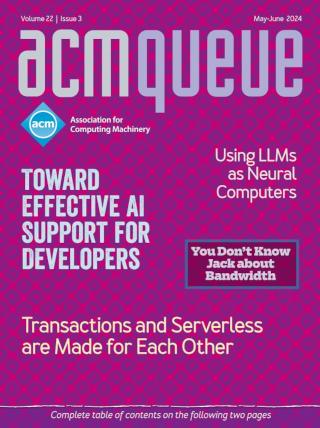
Interpretable Machine Learning:
Moving from mythos to diagnostics
The emergence of machine learning as a society-changing technology in the past decade has triggered concerns about people's inability to understand the reasoning of increasingly complex models. The field of IML (interpretable machine learning) grew out of these concerns, with the goal of empowering various stakeholders to tackle use cases, such as building trust in models, performing model debugging, and generally informing real human decision-making.
Steampunk Machine Learning:
Victorian contrivances for modern data science
Fitting models to data is all the rage nowadays but has long been an essential skill of engineers. Veterans know that real-world systems foil textbook techniques by interleaving routine operating conditions with bouts of overload and failure; to be practical, a method must model the former without distortion by the latter. Surprisingly effective aid comes from an unlikely quarter: a simple and intuitive model-fitting approach that predates the Babbage Engine. The foundation of industrial-strength decision support and anomaly detection for production datacenters, this approach yields accurate yet intelligible models without hand-holding or fuss. It is easy to practice with modern analytics software and is widely applicable to computing systems and beyond.
The Keys to the Kingdom:
A deleted private key, a looming deadline, and a last chance to patch a new static root of trust into the bootloader
An unlucky fat-fingering precipitated the current crisis: The client had accidentally deleted the private key needed to sign new firmware updates. They had some exciting new features to ship, along with the usual host of reliability improvements. Their customers were growing impatient, but my client had to stall when asked for a release date. How could they come up with a meaningful date? They had lost the ability to sign a new firmware release.
Getting Off the Mad Path:
Debuggers and assertions
KV continues to grind his teeth as he sees code loaded with debugging statements that would be totally unnecessary if the programmers who wrote the code could be both confident in and proficient with their debuggers. If one is lucky enough to have access to a good debugger, one should give extreme thanks to whatever they normally give thanks to and use the damn thing!
Surveillance Too Cheap to Meter:
Stopping Big Brother would require an expensive overhaul of the entire system.
IT nerds tend to find technological solutions for all sorts of problems?economic, political, sociological, and so on. Most of the time, these solutions don't make the problems that much worse, but when a problem is of a purely economic nature, only solutions that affect the economics of the situation can possibly work. Neither cryptography nor smart programming will be able to move the needle even a little bit when the fundamental problem is that surveillance is too cheap to meter.
FPGAs in Client Compute Hardware:
Despite certain challenges, FPGAs provide security and performance benefits over ASICs.
FPGAs (field-programmable gate arrays) are remarkably versatile. They are used in a wide variety of applications and industries where use of ASICs (application-specific integrated circuits) is less economically feasible. Despite the area, cost, and power challenges designers face when integrating FPGAs into devices, they provide significant security and performance benefits. Many of these benefits can be realized in client compute hardware such as laptops, tablets, and smartphones.





